Roger Crowley's Blog, page 2
January 30, 2016
How did Shakespeare speak?
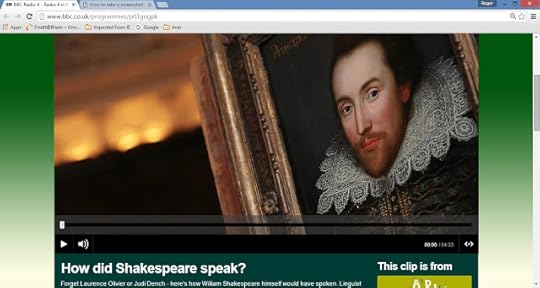
I've always been fascinated by how Shakespeare's plays must have actually sounded. You get a hint sometimes from the baffling false rhymes - 'love' with 'prove' for example - so it's fascinating to hear one of his sonnets reconstructed by the famous British authority on language and linguistic history, David Crystal. To my ears a mixture of West Country and Midlands, with an earthy depth to it:
http://www.bbc.co.uk/programmes/p03gngpk
Published on January 30, 2016 03:00
December 31, 2015
A day out in the past
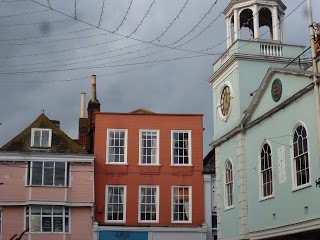 We went to Canterbury for Christmas. On Boxing Day – 26thDecember – we had our traditional outing to explore a local historic town. This year it was Faversham, on the north Kent coast, lying up a creek and surrounded by marshes. Faversham was once an important port, ferrying goods to and fro up the Thames in sailing barges, and lying on the coach road between London and Dover. And it’s a place of great visual fascination. Once a sailor’s town, a wharf, a shipbuilding centre and an early industrial place of gunpowder manufacture, it has a medieval hub of some grandeur, and many pubs. Somewhat down at heel now it retains immense charm and interest - streets of half-timbered houses and overhanging roofs, stucco facades, narrow passage ways and curious shop signs.
We went to Canterbury for Christmas. On Boxing Day – 26thDecember – we had our traditional outing to explore a local historic town. This year it was Faversham, on the north Kent coast, lying up a creek and surrounded by marshes. Faversham was once an important port, ferrying goods to and fro up the Thames in sailing barges, and lying on the coach road between London and Dover. And it’s a place of great visual fascination. Once a sailor’s town, a wharf, a shipbuilding centre and an early industrial place of gunpowder manufacture, it has a medieval hub of some grandeur, and many pubs. Somewhat down at heel now it retains immense charm and interest - streets of half-timbered houses and overhanging roofs, stucco facades, narrow passage ways and curious shop signs.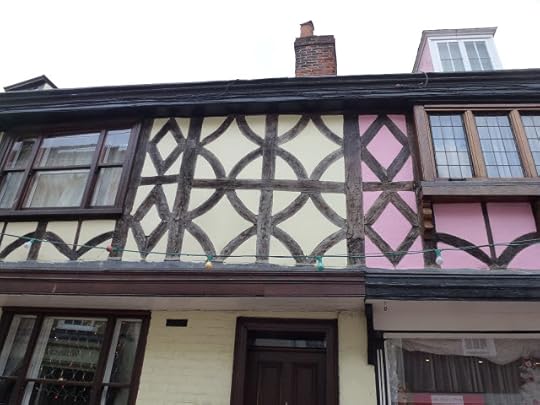
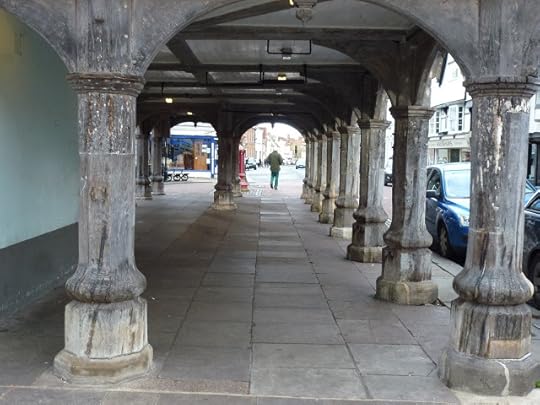 The medieval market hall
The medieval market hall
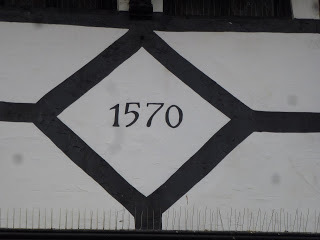
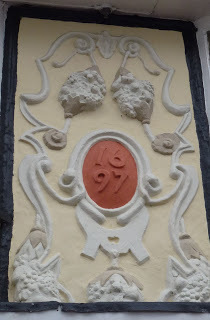
An array of pubs, operational and defunct - witness to a town of seamen:
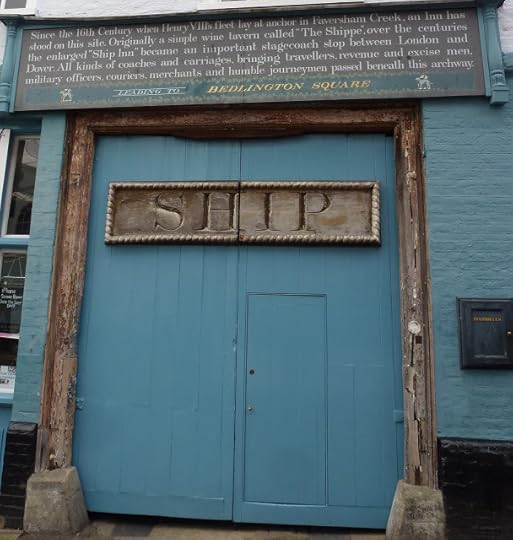
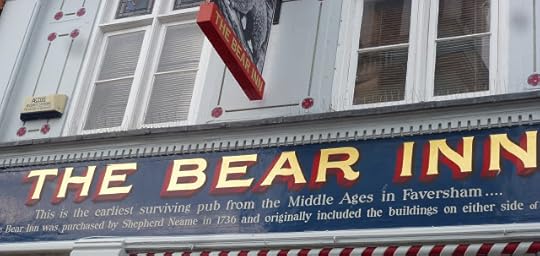
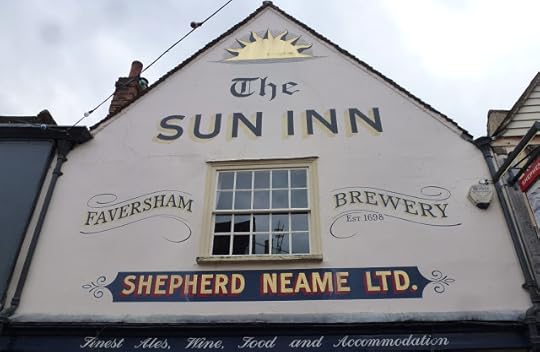

Yellow brick:

And black and white timber. This house was the scene of one of the most notorious murders of the sixteenth century:
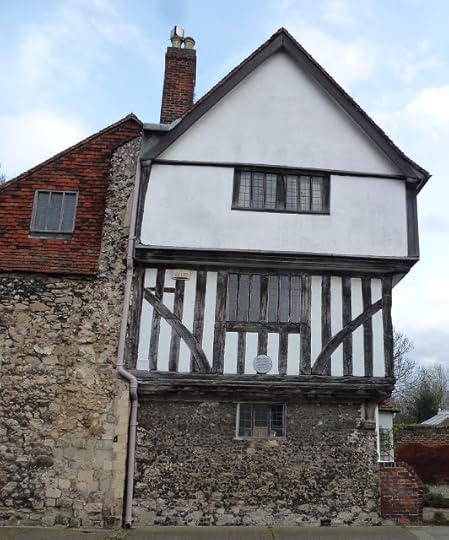
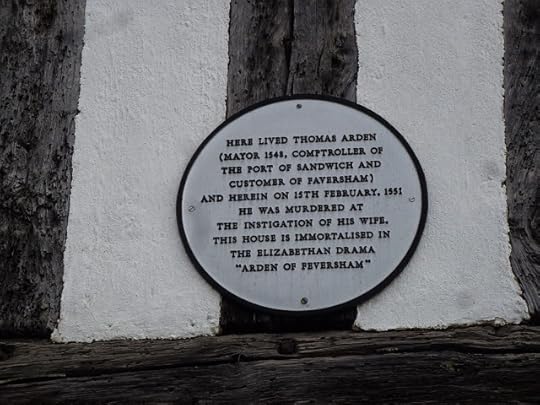 Recent textual analysis reveals that Shakespeare had a hand in writing 'Arden of Feversham'. We know that during the summer of 1596 the theatres of London were closed because of plague, and Shakespeare and his fellow actors of the company of The Chamberlain's Men took their plays on tour. They acted in Faversham. Did they treat the locals to a version of events on their doorstep?
Recent textual analysis reveals that Shakespeare had a hand in writing 'Arden of Feversham'. We know that during the summer of 1596 the theatres of London were closed because of plague, and Shakespeare and his fellow actors of the company of The Chamberlain's Men took their plays on tour. They acted in Faversham. Did they treat the locals to a version of events on their doorstep?We also saw...
Glimpses down alleyways:
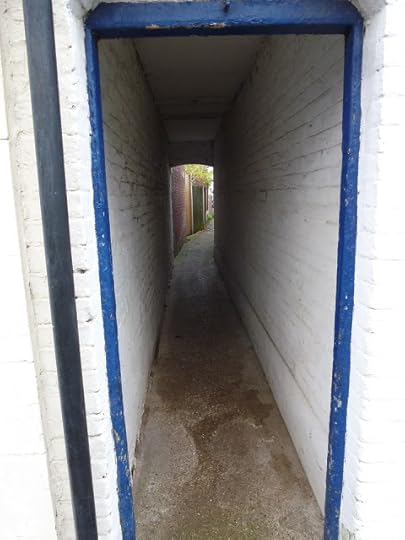
Festive front doors:
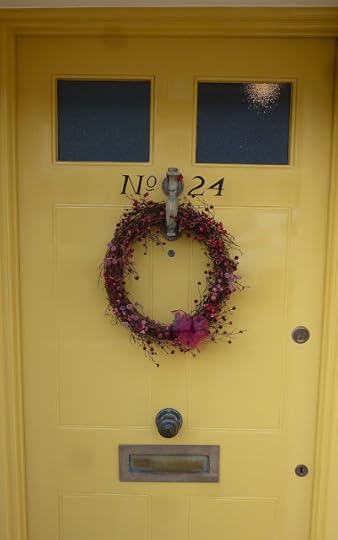
A Thames sailing barge:
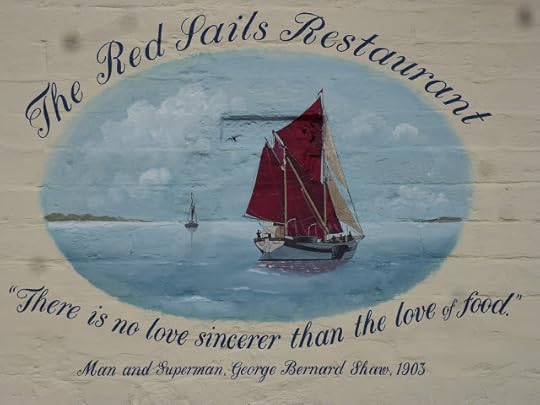
A rare medieval painted pillar in the church:
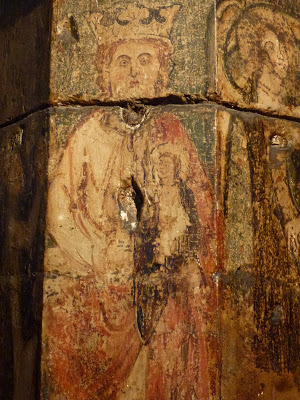
And a pack of beagles:
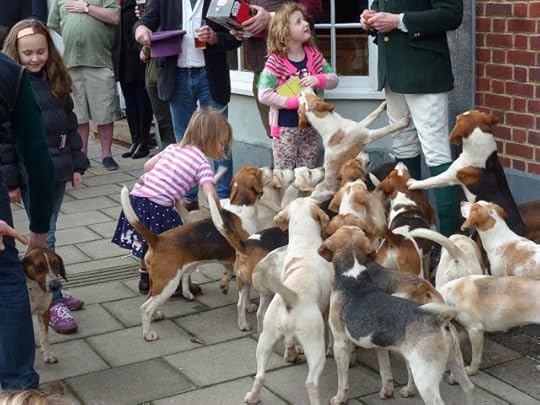
Happy Christmas...!
Published on December 31, 2015 09:25
December 21, 2015
Lykia
I made a special trip to the British Museum recently to look at the Lykian monuments from ancient Xanthos. Lykia (or Lycia) was a civilization on the coasts and upland heights of south western Turkey, influenced by both the Persians and the Greeks that reached its height in the sixth and fifth centuries BC. Lykian tombs still dot the landscape, large blocks like immense loaves, and Xanthos itself is hugely impressive.
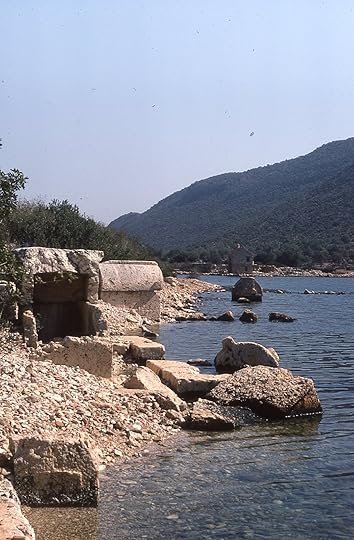 Lykian tombs collapse into the sea at Aperlae - a very old slide!
Lykian tombs collapse into the sea at Aperlae - a very old slide!
Conquered by Alexander the Great, the civilization and cities of Lykia were unknown in the West – and were only rediscovered in the 1830s by the British archaeologist and traveller Charles Fellows. Fellows made several expeditions to this remote area, mapped the sites quite carefully and with the permission of the Ottoman authorities and the help of the sailors of a Royal Navy ship, he excavated and removed some of the friezes and remarkable temple-like tombs, which now remain some of the BM’s most impressive exhibits. They include expressive friezes of horses, men, bulls and winged harpies, a complete colonnaded temple – the Nereid monument – immensely popular with visitors for photo opportunities, and some of the tombs with their massive curved stone lids.
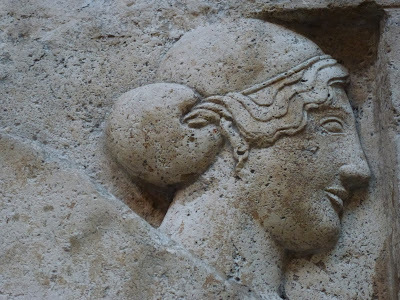

 The Nereid monument
The Nereid monument
It was not only the exhibits that fascinated me. It was also Fellows’ written accounts, which I had been reading, of his journeys across western Turkey, accompanied by a dragoman – an interpreter – and an artist called George Scharf, who not only drew pictures of the tombs in situ, but produced vivid vignettes of rural Turkish life, its people, costumes and buildings. I made some of the same journeys on foot in the 1970s and spent time on the Lykian Coast. What struck me about Scharf’s pictures was that, apart from the dress and the disappearance of the fez, much that they saw in the 1840s was still in place in the 1970s, though by then it was on the point of vanishing
I was just getting stuck into a good look at Fellows’ collection at the BM when the fire alarm went off and we all had to shuffle out.
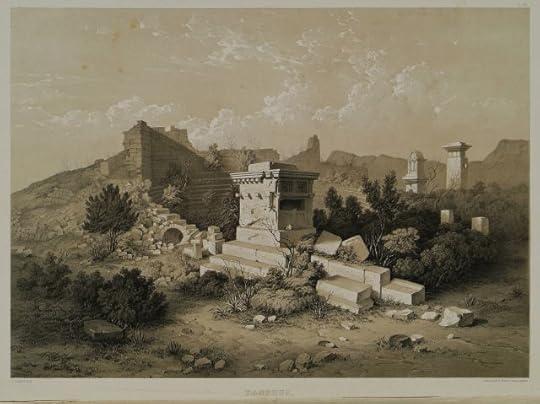 Scharf's drawing of the tower tombs at Xanthos.
Scharf's drawing of the tower tombs at Xanthos.
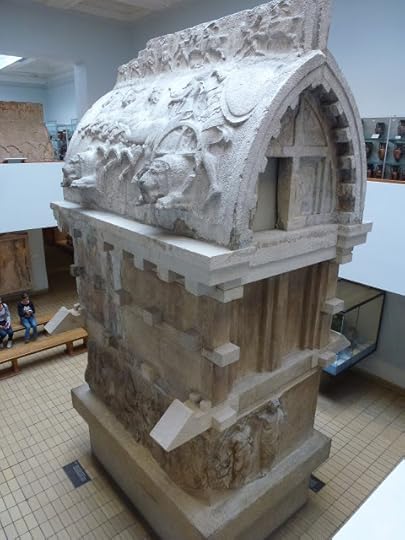 And one in the the BM - the protruding stone 'joists' suggest that these tombs imitated timber structures
And one in the the BM - the protruding stone 'joists' suggest that these tombs imitated timber structures
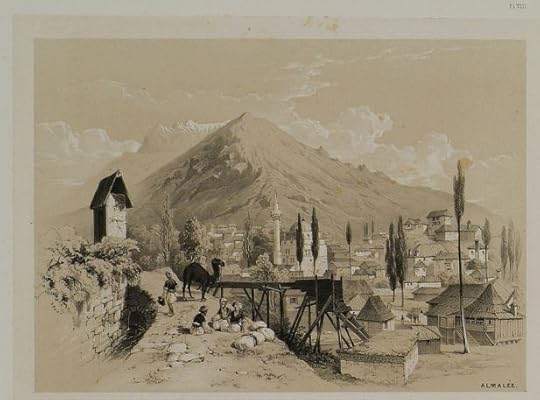
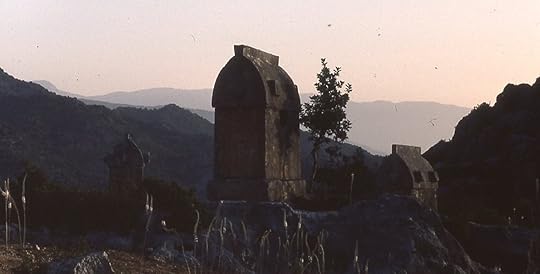 Tombs catching the last light of day near Kekova
Tombs catching the last light of day near Kekova
 Lykian tombs collapse into the sea at Aperlae - a very old slide!
Lykian tombs collapse into the sea at Aperlae - a very old slide!Conquered by Alexander the Great, the civilization and cities of Lykia were unknown in the West – and were only rediscovered in the 1830s by the British archaeologist and traveller Charles Fellows. Fellows made several expeditions to this remote area, mapped the sites quite carefully and with the permission of the Ottoman authorities and the help of the sailors of a Royal Navy ship, he excavated and removed some of the friezes and remarkable temple-like tombs, which now remain some of the BM’s most impressive exhibits. They include expressive friezes of horses, men, bulls and winged harpies, a complete colonnaded temple – the Nereid monument – immensely popular with visitors for photo opportunities, and some of the tombs with their massive curved stone lids.



 The Nereid monument
The Nereid monument
It was not only the exhibits that fascinated me. It was also Fellows’ written accounts, which I had been reading, of his journeys across western Turkey, accompanied by a dragoman – an interpreter – and an artist called George Scharf, who not only drew pictures of the tombs in situ, but produced vivid vignettes of rural Turkish life, its people, costumes and buildings. I made some of the same journeys on foot in the 1970s and spent time on the Lykian Coast. What struck me about Scharf’s pictures was that, apart from the dress and the disappearance of the fez, much that they saw in the 1840s was still in place in the 1970s, though by then it was on the point of vanishing
I was just getting stuck into a good look at Fellows’ collection at the BM when the fire alarm went off and we all had to shuffle out.
 Scharf's drawing of the tower tombs at Xanthos.
Scharf's drawing of the tower tombs at Xanthos.
 And one in the the BM - the protruding stone 'joists' suggest that these tombs imitated timber structures
And one in the the BM - the protruding stone 'joists' suggest that these tombs imitated timber structures

 Tombs catching the last light of day near Kekova
Tombs catching the last light of day near Kekova
Published on December 21, 2015 22:11
December 7, 2015
The dangers of electricity
Published on December 07, 2015 10:09
November 26, 2015
Mapping the Great Siege of Malta
The Great Siege of 1565 has been much in mind lately, having been to a conference on it recently. Amongst other things the siege produced a huge number of illustrated maps - news sheet produced in Italy and beyond day after day updating the progress of the contest - almost the earliest forms of printed war reportage. Whilst thinking about this my friend Allan Langdale sent me some pictures of Malta siege maps from the painted gallery of maps in the Vatican - they're beautiful renderings of the event. Allan runs a great photographic blog on travel, art and architecture at:
https://allansartworlds.sites.ucsc.edu/
Thanks, Allan!
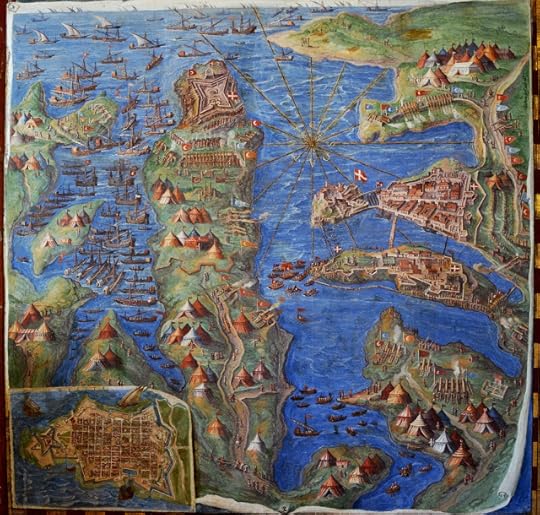 The Ottoman fleet in harbour on the left, and their troops attacking the isolated fort of St Elmo on the tip of the peninsula that is now Valletta (inset bottom left). The other two fortifications of the Knights of Malta are under siege on the right.
The Ottoman fleet in harbour on the left, and their troops attacking the isolated fort of St Elmo on the tip of the peninsula that is now Valletta (inset bottom left). The other two fortifications of the Knights of Malta are under siege on the right.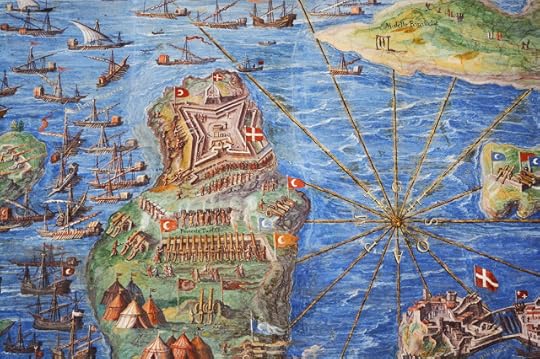 Here's a close up
Here's a close upAnd the gallery also has a wonderful birds-eye view of the clashing of the Christian and Ottoman fleets at the battle of Lepanto in 1571:
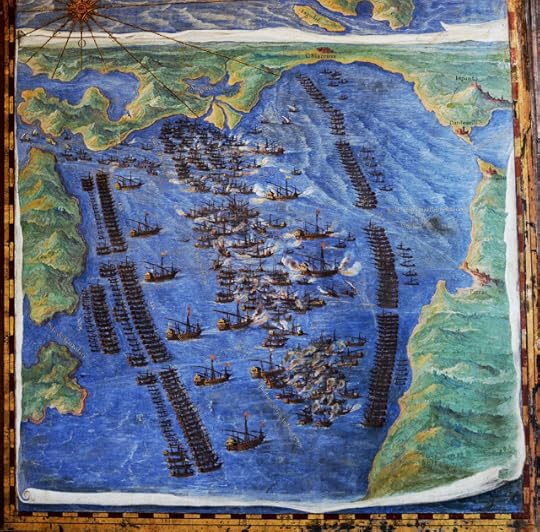
Published on November 26, 2015 02:01
November 13, 2015
A walk along the Maltese coast
I’m in Malta at the moment for a conference on the 450thanniversary of the Great Siege – courtesy of the Malta Historical Society and the University of Malta. Today I took a morning out, before the next session, to walk along the east coast, north of St Julian’s Bay.
The weather is lovely; warm autumn sun, the sea a piercing blue, light wind – the craggy limestone garrigue slopes down to the water, then drops sheer into the enticing depths. The coastal plain is a spiky stone terrace, thin red soil and tenacious Mediterranean plants. Along the headland, the watch towers of the Knights of Malta, white stone cubes, dotted from headland to headland – to signal the approach of Ottoman fleets or Barbary pirates:
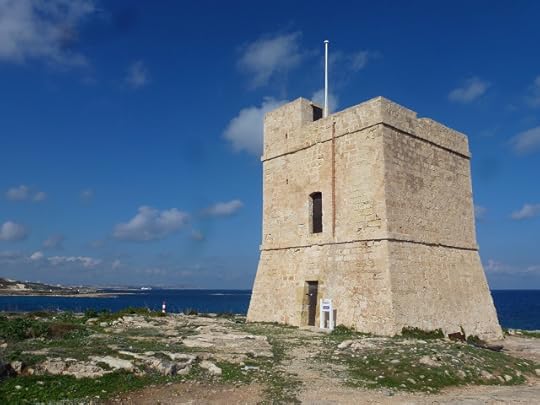
Nearby one tower, there’s a conical stone chamber chiselled out of the rock at a forward facing angle. I’d never seen one of these before. It’s a primitive stone mortar – a fougasse - designed by the Knights to fire stone shot over the sea to slow down a landing by pirates:
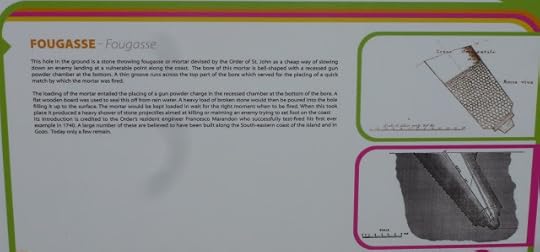
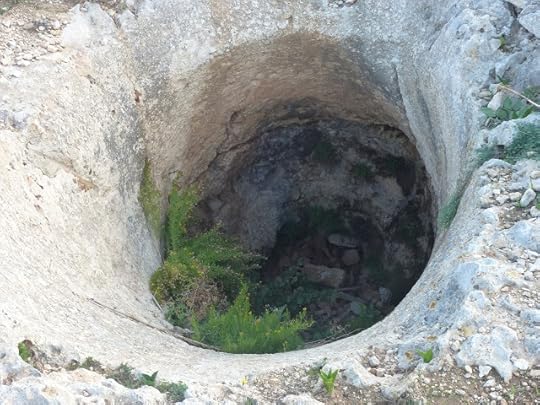
There are rock cut salt pans, now abandoned, and small bays where retired Maltese people swim and watch the day go by. I jump in too - a clean splash into the tranquillizing blue. Further along the coast I come across a curious scene from a hundred years ago - white tents by the sea with the red cross symbol, nurses in period uniforms, horse drawn carts and first world war soldiers. It's a film set for a drama documentary.

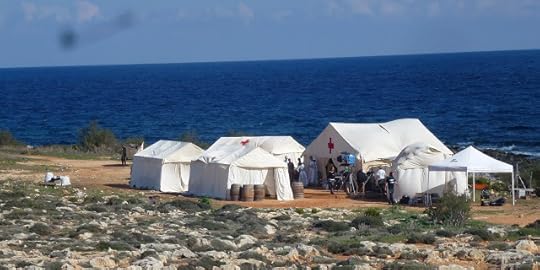
On the headland of the next watchtower, Qalet Marku, I too sit down and let time slip. The sea is bands of blue, ruffled dark in places, then a lighter shade that almost hurts the eyes, a kind of marine steel. The suck and slosh of the water is soothing; the light wind and the sun coming and going behind clouds; red earth; white snail shells; dried out spikes of flowers; the evidence of ancient geology in fossilized rocks; in the distance the cliffs of Gozo. The light is so good you can pick out miniscule details. A red pickup truck parks nearby and a family of Muslims climb out - the women, headscarfed and robed in bright colours. One a brilliant red against the sea. They set down a carpet on the ground, and a hookah. A baby is changed. A pan of aubergines appear. They sit round in a circle and eat. Nomads in a landscape.
I amble home along the coast; time slips by to the sound of the sea. A warship appears beyond the headland - the EU/African summit on migration has just taken place - men in dark suits talking on phones in plate glassed hotels, cavalcades of black limousines with flashing lights and motorcycle outriders disrupting the traffic. Merkel, Hollande, Cameron amongst others, with African heads of state, trying to tackle the problems of human migration across the sea of migrations. But out here it seems briefly a long way off.
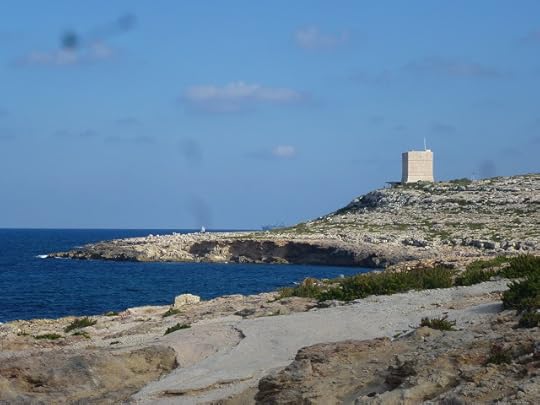 "The sea that is always counting"
"The sea that is always counting"
The weather is lovely; warm autumn sun, the sea a piercing blue, light wind – the craggy limestone garrigue slopes down to the water, then drops sheer into the enticing depths. The coastal plain is a spiky stone terrace, thin red soil and tenacious Mediterranean plants. Along the headland, the watch towers of the Knights of Malta, white stone cubes, dotted from headland to headland – to signal the approach of Ottoman fleets or Barbary pirates:

Nearby one tower, there’s a conical stone chamber chiselled out of the rock at a forward facing angle. I’d never seen one of these before. It’s a primitive stone mortar – a fougasse - designed by the Knights to fire stone shot over the sea to slow down a landing by pirates:


There are rock cut salt pans, now abandoned, and small bays where retired Maltese people swim and watch the day go by. I jump in too - a clean splash into the tranquillizing blue. Further along the coast I come across a curious scene from a hundred years ago - white tents by the sea with the red cross symbol, nurses in period uniforms, horse drawn carts and first world war soldiers. It's a film set for a drama documentary.


On the headland of the next watchtower, Qalet Marku, I too sit down and let time slip. The sea is bands of blue, ruffled dark in places, then a lighter shade that almost hurts the eyes, a kind of marine steel. The suck and slosh of the water is soothing; the light wind and the sun coming and going behind clouds; red earth; white snail shells; dried out spikes of flowers; the evidence of ancient geology in fossilized rocks; in the distance the cliffs of Gozo. The light is so good you can pick out miniscule details. A red pickup truck parks nearby and a family of Muslims climb out - the women, headscarfed and robed in bright colours. One a brilliant red against the sea. They set down a carpet on the ground, and a hookah. A baby is changed. A pan of aubergines appear. They sit round in a circle and eat. Nomads in a landscape.
I amble home along the coast; time slips by to the sound of the sea. A warship appears beyond the headland - the EU/African summit on migration has just taken place - men in dark suits talking on phones in plate glassed hotels, cavalcades of black limousines with flashing lights and motorcycle outriders disrupting the traffic. Merkel, Hollande, Cameron amongst others, with African heads of state, trying to tackle the problems of human migration across the sea of migrations. But out here it seems briefly a long way off.
 "The sea that is always counting"
"The sea that is always counting"
Published on November 13, 2015 06:38
October 27, 2015
On 5 November I'm talking in the medieval Lord Leycester Hospital, Warwick
If you're in the centre of England (and even if you're not), I'm talking about my new book Conquerors and the extraordinary and little known global empire of the Portuguese - on Thursday 5 November in Warwick. Do come along, there'll be a fully illustrated talk + Portuguese cakes and wine - in the fantastic surroundings of the 14th century Lord Leycester Hospital:
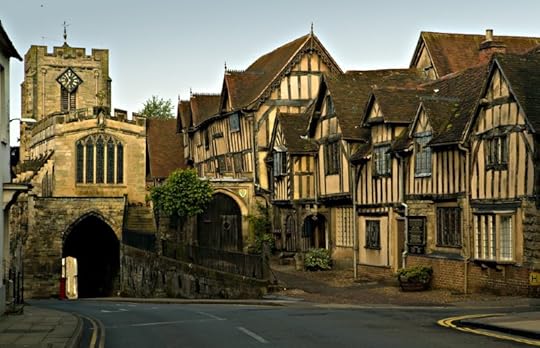
The event will take place in the medieval great hall:
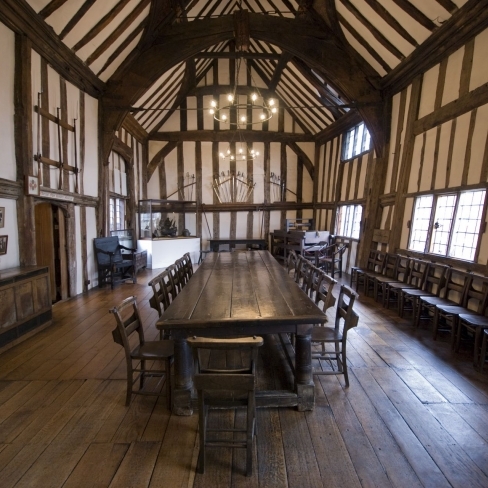
This is a unique and wonderful place for what I hope will be a similarly fascinating evening. Here are the details:
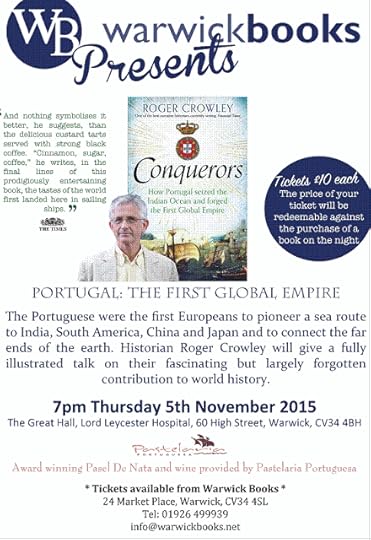
[image error]

The event will take place in the medieval great hall:

This is a unique and wonderful place for what I hope will be a similarly fascinating evening. Here are the details:

[image error]
Published on October 27, 2015 03:24
October 16, 2015
Smithsonian Journeys Travel Quarterly - on Venice
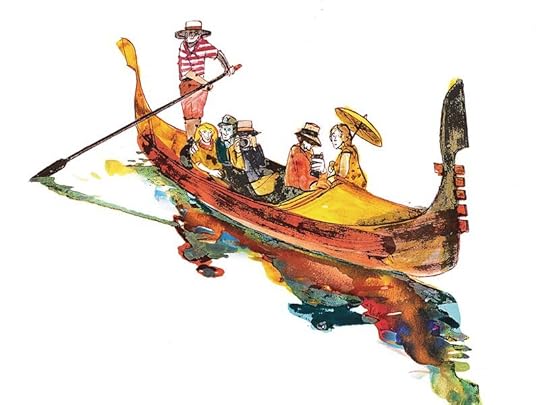
Smithsonian Journeys Travel Quarterly has a beautiful and wide ranging issue out on Venice - you can read my contribution here:
http://www.smithsonianmag.com/travel/smithsonian-journeys-travel-quarterly-venice-180956888/
Published on October 16, 2015 00:35
September 17, 2015
Conquerors conquered
After four years of work, my new book, Conquerors, on the Portuguese voyages of discovery, was officially published yesterday in the UK. I was lucky enough to have a launch in the wonderful surroundings of the Portuguese Embassy - my thanks to the Ambassador for a gracious and highly enjoyable evening. The US edition will be out in December.


Published on September 17, 2015 23:42
September 14, 2015
The blog resumes
After a lengthy pause...the past few months have been spent exhaustively correcting proofs, writing articles and talks for my new book - 'Conquerors: How Portugal seized the Indian Ocean and forged the First Global Empire' - out on Thursday in the UK - cover to follow shortly. You'll have to wait until December, I'm afraid, if you're in North America.
In the interim I have also just returned from a fortnight talking on a Zegrahm Expeditions cruise down the Adriatic Coast from Dubrovnik to Malta; on the way tracking the presence of the Venetians in the sea. St Marks's lion is everywhere on the castle walls and doorways of Adriatic towns.
Here are a few random images:
 A religious procession in Valletta
A religious procession in Valletta
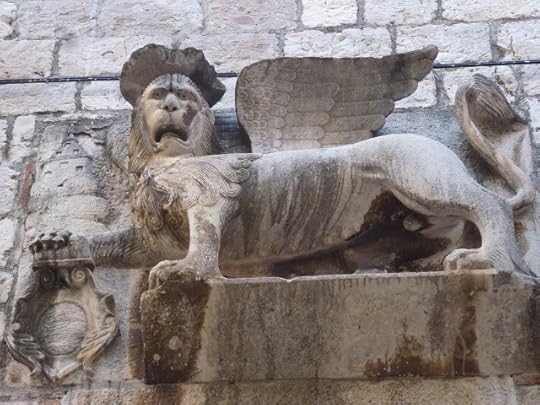 A particularly bad tempered Venetian lion on the walls of the town of the island of Hvar, Croatia
A particularly bad tempered Venetian lion on the walls of the town of the island of Hvar, Croatia
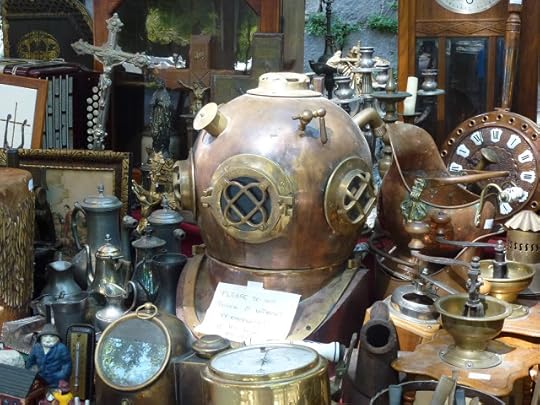 Everyone needs a diving helmet from the Split flea market
Everyone needs a diving helmet from the Split flea market
 A small wizard conjures eerie sounds from a three hundred year old brass flute on the ramparts of a castle; behind, the bare hills of Albania - shivers down the spine.
A small wizard conjures eerie sounds from a three hundred year old brass flute on the ramparts of a castle; behind, the bare hills of Albania - shivers down the spine.
 The roof of the Emperor Diocletian's mausoleum in his palace in Split
The roof of the Emperor Diocletian's mausoleum in his palace in Split
In the interim I have also just returned from a fortnight talking on a Zegrahm Expeditions cruise down the Adriatic Coast from Dubrovnik to Malta; on the way tracking the presence of the Venetians in the sea. St Marks's lion is everywhere on the castle walls and doorways of Adriatic towns.
Here are a few random images:
 A religious procession in Valletta
A religious procession in Valletta
 A particularly bad tempered Venetian lion on the walls of the town of the island of Hvar, Croatia
A particularly bad tempered Venetian lion on the walls of the town of the island of Hvar, Croatia
 Everyone needs a diving helmet from the Split flea market
Everyone needs a diving helmet from the Split flea market
 A small wizard conjures eerie sounds from a three hundred year old brass flute on the ramparts of a castle; behind, the bare hills of Albania - shivers down the spine.
A small wizard conjures eerie sounds from a three hundred year old brass flute on the ramparts of a castle; behind, the bare hills of Albania - shivers down the spine.
 The roof of the Emperor Diocletian's mausoleum in his palace in Split
The roof of the Emperor Diocletian's mausoleum in his palace in Split
Published on September 14, 2015 23:38
Roger Crowley's Blog
- Roger Crowley's profile
- 820 followers
Roger Crowley isn't a Goodreads Author
(yet),
but they
do have a blog,
so here are some recent posts imported from
their feed.




